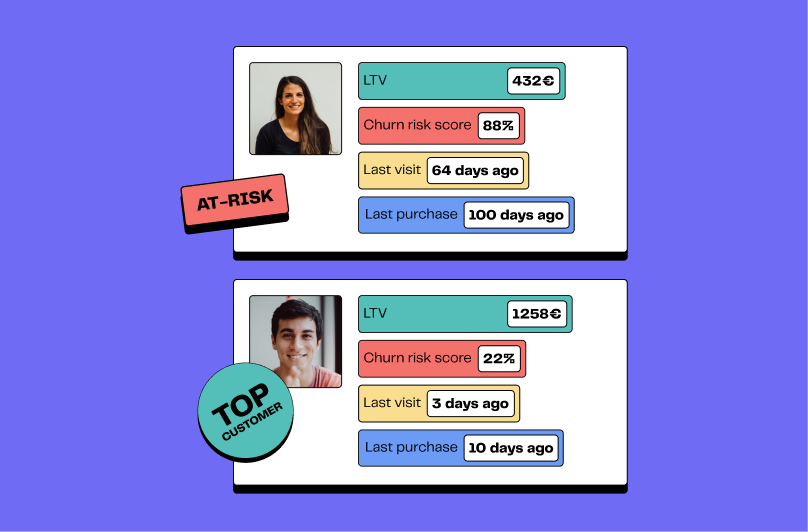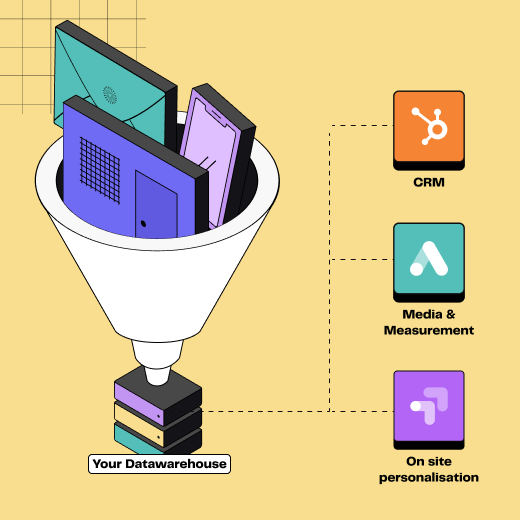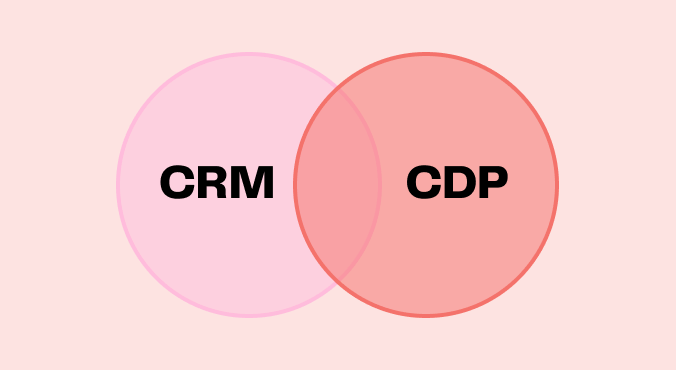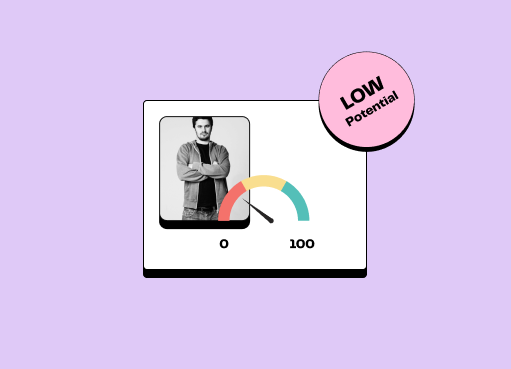
Lead scoring: definition and use cases
6min • Apr 3, 2024

Alexandra Augusti
Strategy & Operations Manager
Lead scoring is a crucial technique for evaluating the interest and purchase potential of prospects by assigning them a score based on explicit demographic, sectoral, and geographical data, as well as implicit criteria, such as their online behavior and engagement with your content.
Lead scoring is at the heart of marketing actions, allowing for more efficient resource management, time saving and an improved return on investment (ROI). By integrating this score directly into your CRM (HubSpot, Salesforce, etc.) and advertising platforms (Meta, Google, LinkedIn, etc.), you can better segment your database and target only high-value individuals.
Thus, lead scoring enriches your marketing and sales strategies, allowing you to:
Identify the most engaged leads who are most likely to become customers
Organize lead follow-up based on their score, concentrating your efforts where they are most needed
Personalize your communication and offers to precisely meet the needs of each prospect, based on their profile
Engage hesitant prospects at the right time, with targeted content tailored to their position in the buying cycle (implementing a lead nurturing strategy)
This article details what lead scoring is, how to calculate it, and how to use it in your sales/marketing tools to improve your business performance.
What is Lead Scoring?
Lead scoring is a crucial strategy in sales and marketing. It enables businesses to evaluate the level of interest and purchase potential of each prospect by assigning them a score. This score is based on a comprehensive analysis of various data points, including explicit and implicit criteria.
Explicit criteria for lead scoring include direct information provided by the prospect, such as age, gender, marital status, job position, industry sector, company size, and geographical location. These elements help determine if the lead in question matches your ideal customer profile.
On the other hand, implicit criteria are based on the prospect's behavior, including interactions with your website, engagement with your content (such as email opening, viewing a blog page, downloading white papers, or registering for webinars), or interactions with sales representatives. These indicators reveal the prospect's level of maturity in the buying process.
By merging these criteria, you can assign a specific score to each prospect, typically ranging from 0 to 100 points. A higher lead score indicates a more qualified prospect, closer to making a purchasing decision.
Scoring and assigning points are key elements in refining your marketing strategy and increasing the effectiveness of your sales actions.
By implementing a lead scoring system, businesses can optimize their sales and marketing efforts. It helps prioritize leads, ensuring that the sales team focuses on prospects with the highest potential for conversion. This not only saves time but also maximizes the chances of closing deals and increasing revenue.
One of the key benefits of lead scoring is its ability to predict customer behavior. By analyzing the data and assigning scores, businesses can identify patterns and trends that indicate a prospect's likelihood to convert. This predictive aspect allows companies to tailor their sales and marketing strategies accordingly, improving customer targeting and increasing overall effectiveness.
Effective lead scoring enables hyper-personalized marketing strategies. By understanding where a prospect stands in the buying journey, marketers can tailor communications more effectively, improving engagement and conversion rates.
Implementing a lead scoring system requires collaboration between the sales and marketing teams. The sales team provides valuable insights into customer behavior and preferences, while the marketing team collects and analyzes data to identify significant indicators.
In a nutshell, lead scoring is a powerful tool that helps businesses prioritize leads, predict customer behavior, and optimize their sales and marketing efforts. By leveraging data and adopting efficient scoring models, companies can significantly improve their conversion rates and drive business success.
⚠️ Obviously, each company needs to have a lead scoring system adapted to its particular context, and must not simply replicate a competitor's model. A common method is to use data from previous leads (who have now converted into customers) to identify the criteria that "qualified" leads have in common, and then assign points based on this historical data.
💡 Analyzing leads who did not convert can also be interesting to determine criteria common to all of these people. This can highlight any frictions in the sales cycle, enabling you to take further preventive actions.
How to Implement a Lead Scoring Strategy?
To develop an effective lead scoring strategy, you need to follow four key steps:
Define your goals: Start by clarifying what you want to achieve with lead scoring. Identify your success criteria and determine how you will measure the effectiveness of your lead scoring strategy. Your goals may include improving lead conversion rates, reducing the duration of the sales cycle, or improving customer satisfaction. In defining your goals, don't forget to determine how this lead scoring will be used: by which team(s), on which tools (CRM, advertising platforms, etc.), how, etc.?
Identify scoring factors: Select the criteria that will be used to evaluate your leads, taking into account both their profile and behavior. The criteria can be explicit, such as information directly collected from the lead (name, company, industry sector), or implicit, based on their behavior (visits to your website, engagement with your content, responsiveness to emails). Assign a score to these criteria based on their relevance, giving them positive or negative points depending on their importance. To determine the best method for scoring your leads, it is important to gather information from sales teams, insights directly collected from clients, and hidden within your data.
Sales teams that address both prospects and customers generally have a good understanding of the profiles of people likely to convert, as well as the best content/hooks that work for them. Incorporating feedback from sales on lead quality and conversion success helps in adjusting scoring criteria and weights, making the scoring model more accurate over time.
Customers can provide a fresh perspective on the sales process and shed light on what truly motivated them to purchase a product or service. Focusing on existing customers also helps discover their "lookalikes," who closely resemble them (and therefore who are prospects that could easily convert).
Lastly, the power of data should not be underestimated. The information collected from sales teams and existing customers is essential, but analyzing historical data brings quantitative insights (not just qualitative). Machine learning techniques can identify the levers/factors that lead to conversion by building a model that explains the objective based on these factors. They also allow for the retention of statistically significant factors. This predictive scoring can automatically refine over time. Additionally, relying on data to determine which criteria to consider for lead scoring allows attention to be given to "minor" actions that may not have been taken into account otherwise. If the process is not automated, differentiating prospects based on viewed pages may not be easy. However, sometimes a pattern can be identified in this regard and has significant value.
⚠️ It is essential to ensure that all actions that could influence buying propensity are collected. Therefore, it is important to have a preliminary discussion with sales teams / customers to have all the necessary data available.
Automatically calculate the score: Once the scoring factors have been identified, you can automatically assign points to each lead based on the established criteria. You can opt for a simple or more complex formula (weighted average, linear regression, machine learning algorithms) to ensure that the score accurately reflects the level of interest and maturity of the lead. To estimate the relevance of your model, it is essential to compare the score to a baseline model and measure the gain.
(and beyond!) Validate and iterate: Test and fine-tune your lead scoring strategy by evaluating the results and readjusting the criteria, scores, and formula as needed.
Setting up this scoring system is just one step towards a more integrated and effective marketing and sales strategy. By closely tracking and constantly adjusting your lead scoring system, you optimize your marketing and sales actions to effectively target and convert leads into customers.
⚠️ A unique lead scoring may be sufficient if your company only has one type of buyer persona. However, as you expand or complexify your offerings, your audience may broaden and possess different profiles. Therefore, it is relevant to create a score per buyer persona to better reflect your company's reality through your lead scoring.
Furthermore, as your business grows, the number of cross-selling or upselling opportunities also increases. In order to maximize the potential of these sales opportunities, it is crucial to implement a customer scoring system.
In summary, customer and lead scores are essential to optimize your sales process, improve efficiency, increase the chances of converting leads into customers, and improve upsell/cross-sell opportunities. Do not underestimate the importance of scoring in your marketing strategy!
Here is a template for RFM segmentation if you need some additional resources on customer scoring.
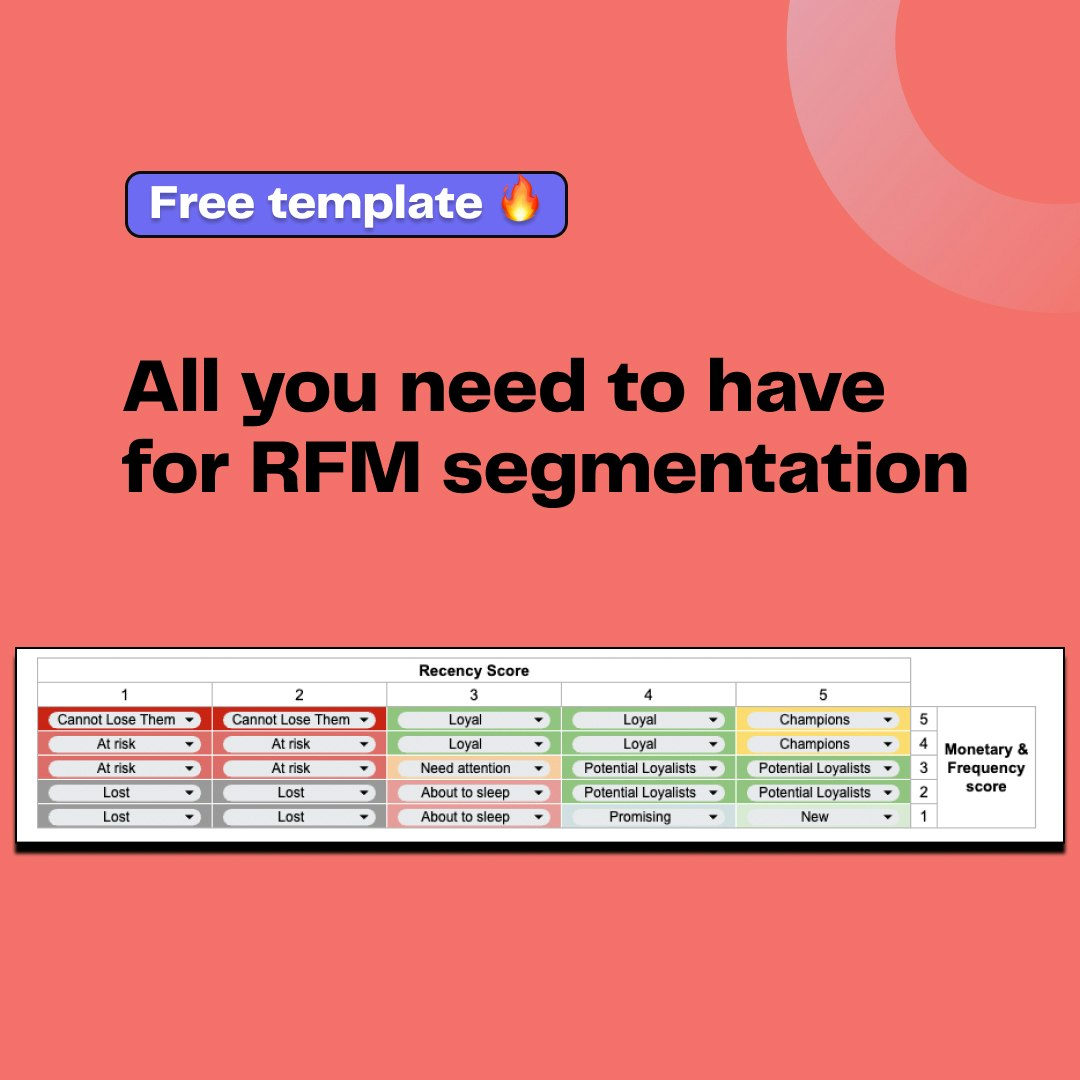
How to use lead scoring?
Lead scoring allows you to identify the hottest prospects and assign them a score based on their behavior and the information collected. With this scoring strategy, salespeople are equipped with qualified leads and can contact them at the right time to maximize the chances of closing a sale.
Lead nurturing complements this approach by engaging leads and accompanying them throughout the buying cycle. By using lead scoring, you can create a more efficient and targeted marketing strategy by focusing on the most qualified prospects. Lead scoring is therefore an essential tool in a marketing strategy and helps maximize the chances of converting leads into customers.
Here's how to effectively integrate lead scoring into your sales strategy:
Calculate and store your lead scoring centrally (e.g., in your data warehouse) and automatically send this data to all your tools (CRM, marketing automation, advertising platforms, etc.). A change in definition will be automatically reflected in all your tools.
💡 Your lead scoring model can also include predictive attributes. If so, centralize them in your data warehouse.
Centralizing and integrating lead scoring with a Customer Data Platform can provide a 360-degree view of the customer, enhancing personalization and predictive accuracy.

Customer 360, centralizing all customer data
You can then use this lead scoring and predictive attributes directly in your tools, especially for segmentation purposes to address the right audience, at the right time. Furthermore, you can use this scoring to adjust the value of the conversions you transmit to your advertising platforms, to make them understand which individuals have the most value to you.
Organize your leads into categories based on their score and particularities, to address them with tailored communications. For example, you could set up separate emailing campaigns for leads with high, medium, or low scores, offering relevant information, promotions, or invitations based on their context.
Prioritize your sales initiatives based on lead scores, focusing your efforts on the most promising and urgent leads. For example, set a minimum score threshold for a lead to be considered ready for sales follow-up. Also, use the score to choose the most suitable method and frequency of communication for each prospect.
Foster better cooperation between your marketing and sales teams through lead scoring, used as a common metric. Together, define evaluation criteria, necessary qualification levels, and lead handover procedures. The scoring can also be used to evaluate the effectiveness of your marketing and sales operations, allowing you to refine your approach.
💡 We detail all relevant use cases to implement through DinMo to optimize lead generation in a dedicated article. We particularly recommend using lead scoring to adjust the value of certain conversions made by leads, to make the advertising algorithms understand which customers have the most value for your business. For example, a qualified lead will be assigned a value of "10" vs. an unqualified lead will have a rating of "1".
At DinMo, our mission is to democratize access to data for all non-technical teams, whether they are Marketing, Sales, or Customer Success.
To help our clients, we enrich their lead data with predictive metrics (lead scoring, time to purchase, etc.) and automatically calculate scorings according to their context.
Thanks to our Visual Builder tool, it is then possible to create prospects segments based on the generated scoring. These segments can be activated later in any platform (advertising, emailing, CRM, etc.) and used to optimize marketing performance.
💡 A change in the scoring methodology or in the segments is automatically reflected across all platforms, ensuring a homogeneity of strategies in all tools.
Conclusion
In conclusion, employing lead scoring is a fundamental step for any company looking to optimize its sales interactions. By assigning points based on defined criteria and utilizing automation to manage contacts, you establish a scoring system that not only qualifies leads effectively but also fuels a more effective sales dynamic.
To adopt this effective lead scoring approach, it is crucial to follow four essential steps: clearly define objectives, determine scoring criteria, automatically calculate scores, and regularly validate and improve the process. When used correctly and properly tailored to your context and offering, lead scoring becomes a powerful lever to refine your prospecting.
Lead scoring models play a crucial role in sales and marketing. They help the sales team prioritize leads based on data-driven predictions and improve the efficiency of the CRM system. It also improves the efficiency of the CRM system, and enables businesses to better understand customer behavior. By implementing an effective lead scoring system, businesses can optimize their sales and marketing efforts and drive growth.
Interested in lead scoring, in need of support to develop your segmentation strategy, or looking for methods to activate your data? Contact us now; we would be more than happy to help!













